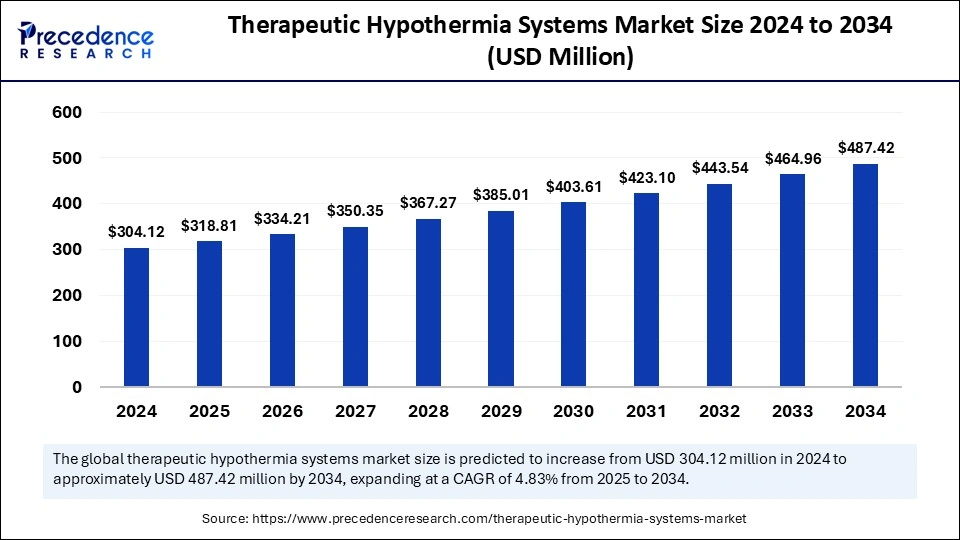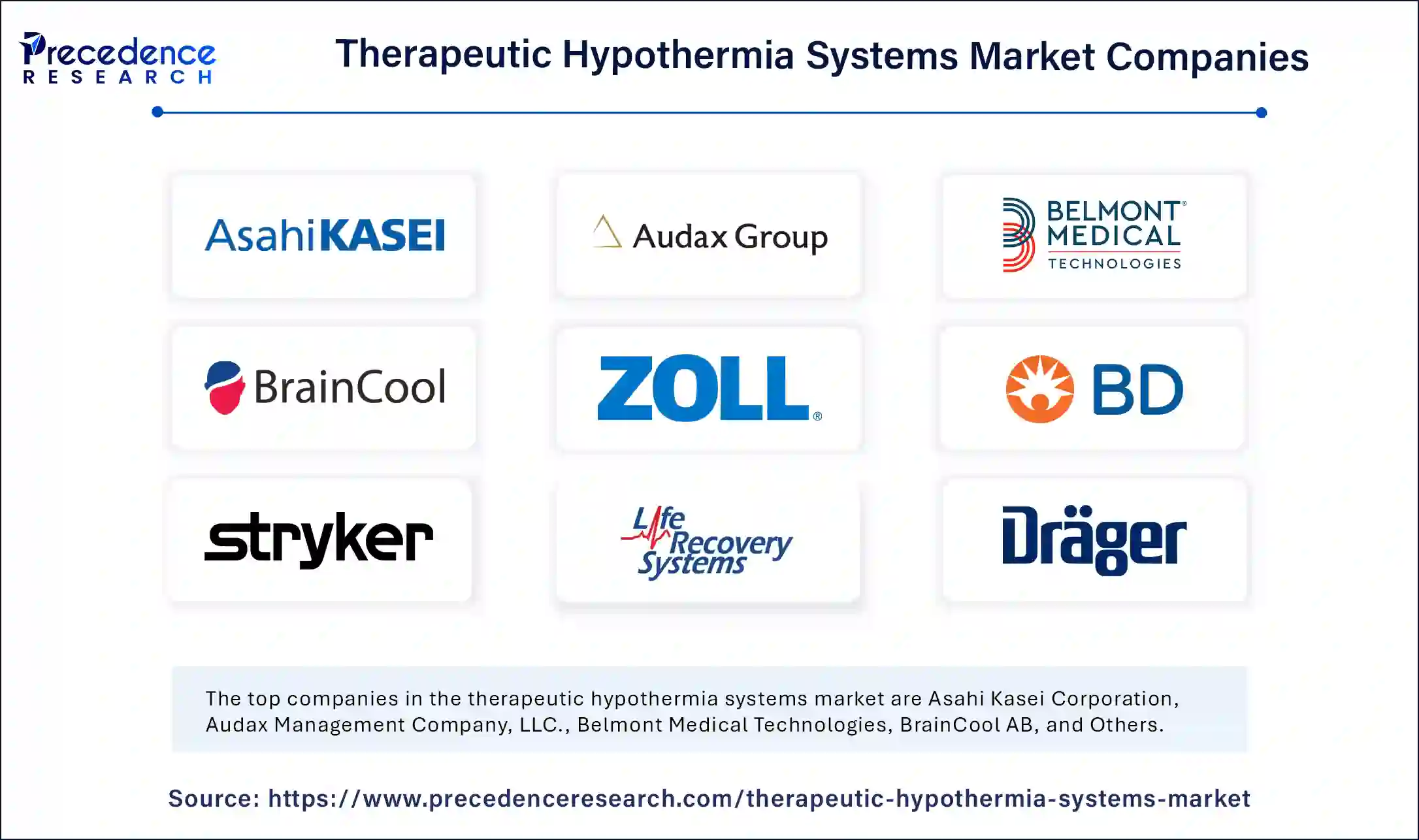Therapeutic Hypothermia Systems Market Size to Surge USD 487.42 Mn by 2034
Therapeutic Hypothermia Systems Market Size and Growth
The global therapeutic hypothermia systems market size is estimated to surge around USD 487.42 million by 2034 increasing from USD 304.12 million in 2024, with a CAGR of 4.83%.

Get Sample Copy of Report@ https://www.precedenceresearch.com/sample/5735
Key Takeaways
-
North America captured the highest market share of 41% in 2024.
-
Asia Pacific is forecasted to grow at a significant CAGR during the projected period.
-
The cooling devices segment dominated the market by product in 2024.
-
Cooling catheters are expected to experience notable growth in the coming years.
-
Neurology was the leading application segment in 2024.
-
The cardiovascular segment is likely to achieve the fastest growth rate between 2025 and 2034.
Role of AI in the Therapeutic Hypothermia Systems Market
AI is playing a transformative role in the therapeutic hypothermia systems market by improving patient outcomes, enhancing system efficiency, and advancing medical research. AI-driven algorithms help in precise temperature monitoring and automated control, ensuring optimal cooling rates while preventing complications like overcooling or rewarming too quickly. These intelligent systems continuously analyze patient data in real time, adjusting cooling parameters to maintain targeted therapeutic temperatures. This enhances the effectiveness of hypothermia treatment for conditions such as cardiac arrest, stroke, and traumatic brain injuries.
Additionally, AI-powered predictive analytics assist healthcare providers in identifying patients who are most likely to benefit from therapeutic hypothermia. By analyzing vast medical datasets, AI can support early diagnosis and personalized treatment planning, improving survival rates and recovery times. Machine learning algorithms are also optimizing the development of next-generation cooling devices, enhancing energy efficiency and safety features. As AI continues to evolve, its integration with therapeutic hypothermia systems is expected to drive innovation, making treatments more precise, accessible, and effective.
Also Read: Precision Genomic Testing Market
Therapeutic Hypothermia Systems Market Overview
The global therapeutic hypothermia systems market is gaining traction as more healthcare institutions adopt temperature management solutions to enhance patient outcomes. These systems play a crucial role in preventing neurological damage and improving survival rates in critical conditions such as cardiac arrest and neonatal hypoxia. Innovations in medical device technology and rising demand for evidence-based treatment methods are driving market expansion.
Market Scope
| Report Coverage | Details |
| Market Size by 2034 | USD 487.42 Million |
| Market Size in 2025 | USD 318.81 Million |
| Market Size in 2024 | USD 304.12 Million |
| Market Growth Rate from 2025 to 2034 | CAGR of 4.83% |
| Dominating Region | North America |
| Fastest Growing Region | Asia Pacific |
| Base Year | 2024 |
| Forecast Period | 2025 to 2034 |
| Segments Covered | Product, Application and Regions. |
| Regions Covered | North America, Europe, Asia-Pacific, Latin America, and Middle East & Africa |
Market Dynamics
Market Drivers
A growing number of clinical studies supporting the effectiveness of therapeutic hypothermia is one of the key drivers of market growth. Increased government funding for critical care and emergency response systems is also contributing to wider adoption. The development of user-friendly, automated hypothermia devices is making these systems more accessible for healthcare providers, further boosting demand.
Opportunities
The increasing use of AI and machine learning in medical devices is opening new opportunities in the therapeutic hypothermia market. Advanced monitoring systems that optimize temperature control and reduce complications are gaining popularity. Additionally, the expansion of healthcare infrastructure in emerging economies presents untapped potential for market players. Collaborations between research institutions and medical device companies are also fostering the development of more efficient cooling systems.
Challenges
One of the major challenges in the market is the high initial investment required for therapeutic hypothermia systems. Many hospitals, particularly in developing regions, struggle with budget constraints that limit their ability to adopt these technologies. Additionally, potential side effects, such as blood clotting disorders and infections, create concerns about the long-term safety of therapeutic hypothermia treatments. Regulatory challenges and lengthy approval processes further complicate market expansion.

